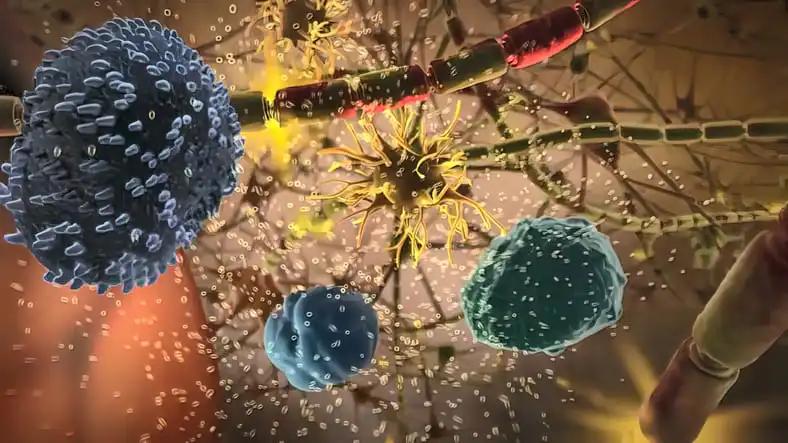KEY TAKEAWAYS
- The phase 2 trial aimed to evaluate the correlation between AI-STIL of NPC TME cell subpopulations and outcomes in pts treated with ICI-based therapy.
- The result concluded that in NPC pts on ICI, AI-driven analysis favors intratumoral TIL/macrophage over stromal residues.
Nasopharyngeal carcinoma (NPC) is a type of cancer that can be hard to treat, especially when it comes back or spreads. A promising new treatment called immune checkpoint inhibitor (ICI) has shown some success in early trials.
Herein, Bhumsuk Keam and his research group, with their analysis called AI-powered spatial tumor-infiltrating lymphocyte analysis (AI-STIL), examined how ICI works in NPC patients (pts). They unraveled the correlations between diverse cell subpopulations and clinical outcomes in ICI-treated individuals.
About 73 pts who underwent treatment with different drug combinations, such as Nivolumab+Gemcitabine (Niv+Gem; KCSG HN17-11), Niv+Ipilimumab (Niv+Ipi, NCT03097939), Niv alone (Niv, NCT02339558), or Avelumab+Axitinib (Ave+Axi, NCT04562441). Patients had matching H&E slides before starting the treatment. Using Lunit SCOPE IO from Korea, they conducted a detailed analysis of tumor-infiltrating lymphocytes (TIL), macrophages (MP), fibroblasts (FB), and endothelial cells (EC) within the tumor and surrounding tissue.
As a result, the median progression-free survival (mPFS) was 7.3 months, and the overall survival (mOS) was 30 months. The objective response rate (ORR) and mPFS for each treatment regimen were 38.7%/13.8 m in Niv+Gem (n=31), 36.4%/5.4 m in Niv+Ipi (n=22), 36.4%/3.7 m in Niv (n=11), and 0%/5.4 m in Ave+Axi (n=9).
In the analysis of TIL subgroups, mPFS was significantly higher in the high intratumoral TIL (iTIL) group compared to the low iTIL group ( HR 0.44, P=0.0081). There was no significant difference in stromal TIL (sTIL) (HR 1.14, P=0.6681). In the high intratumoral MP subgroup, mPFS was longer (HR 0.5, P=0.0209), but there was no significant difference in the stromal MP subgroup (HR 0.9, P=0.7278).
Regarding FB and EC analyses, mOS was lower in the high stromal FB (sFB) group compared to the low sFB group (HR 2.44, P=0.0148). However, there were no significant differences in survival outcomes among the other cell subgroups.
The study concluded that AI-driven interactive analysis of the tumor microenvironment (TME) indicated that, in pts with NPC undergoing ICI treatment, the clinical significance lies primarily in intratumoral TIL or macrophages rather than residual stromal elements.
This study is sponsored by National Cancer Institute (NCI), National Cancer Centre, Singapore, and Chinese University of Hong Kong.
Source: https://cslide.ctimeetingtech.com/asia2023/attendee/confcal/show/session/38
Clinical Trials: https://clinicaltrials.gov/study/NCT02339558
https://clinicaltrials.gov/study/NCT03097939
https://clinicaltrials.gov/study/NCT04562441
Keam B, Lim DWT, Ock CY, et al. “Artificial intelligence-powered spatial analysis of tumor microenvironment (TME) in nasopharyngeal carcinoma (NPC) patients treated with immune checkpoint inhibitors (ICI).” Presented at ESMO ASIA 2023. (Abstract: 3550)



